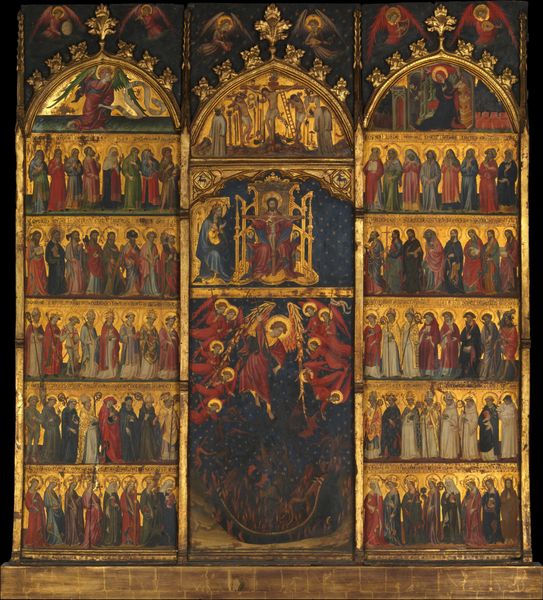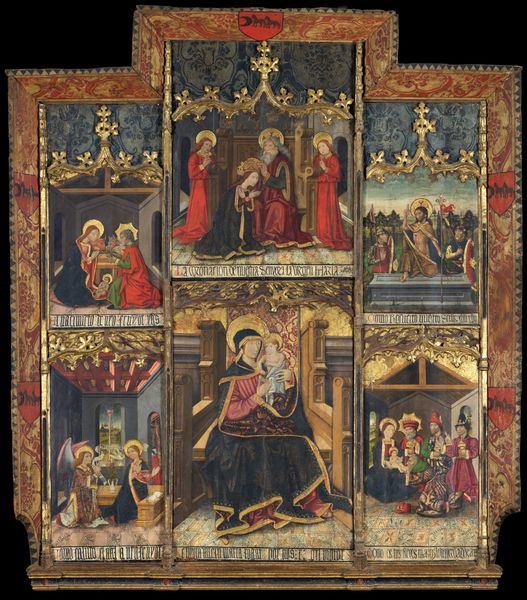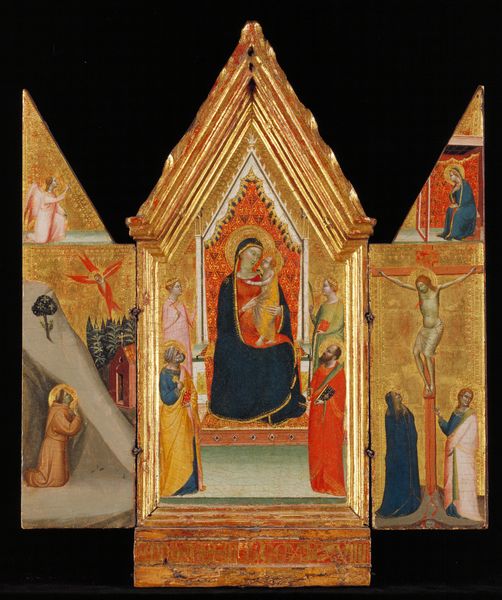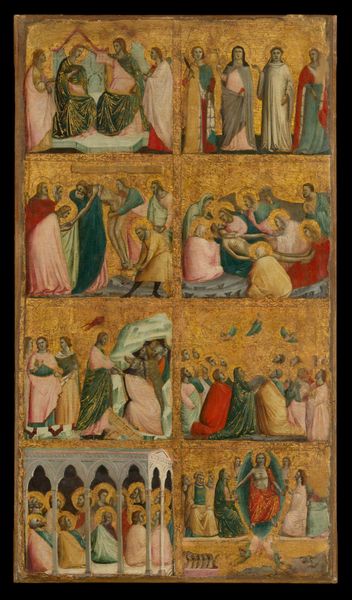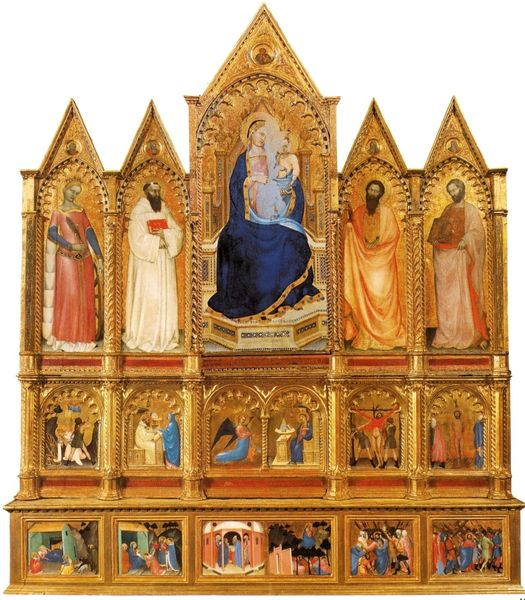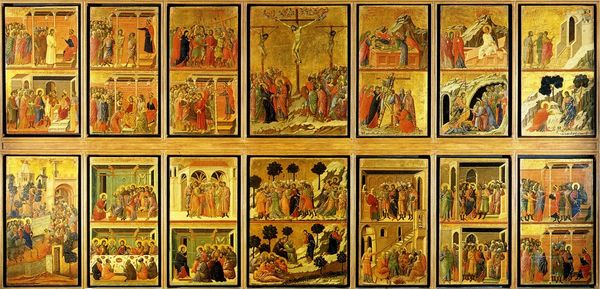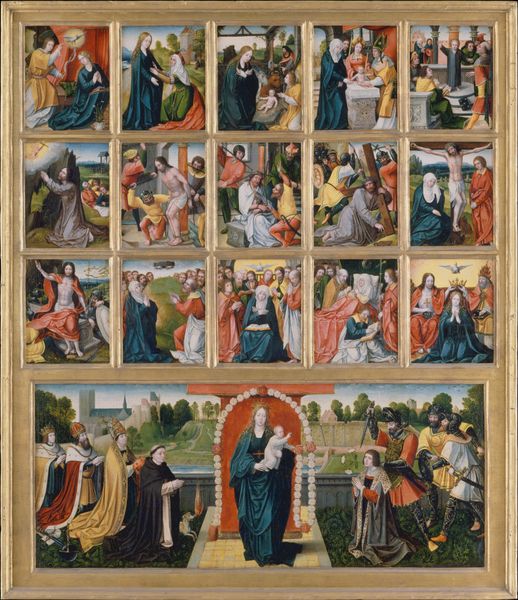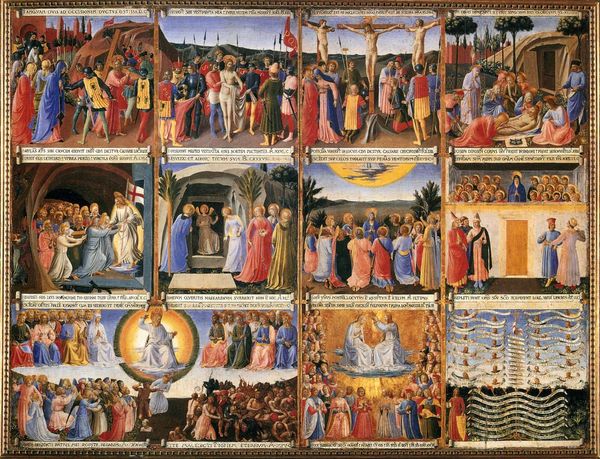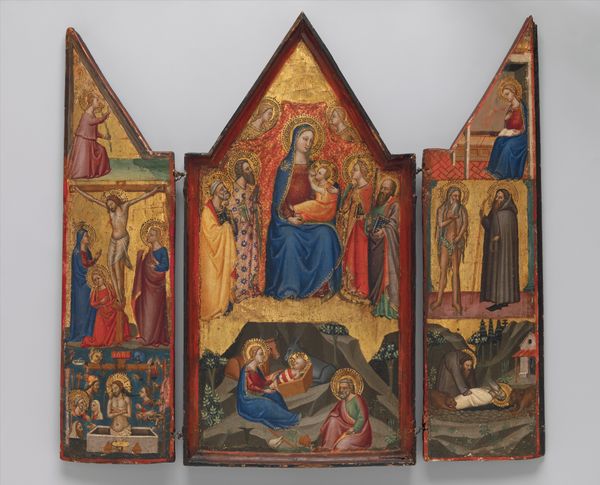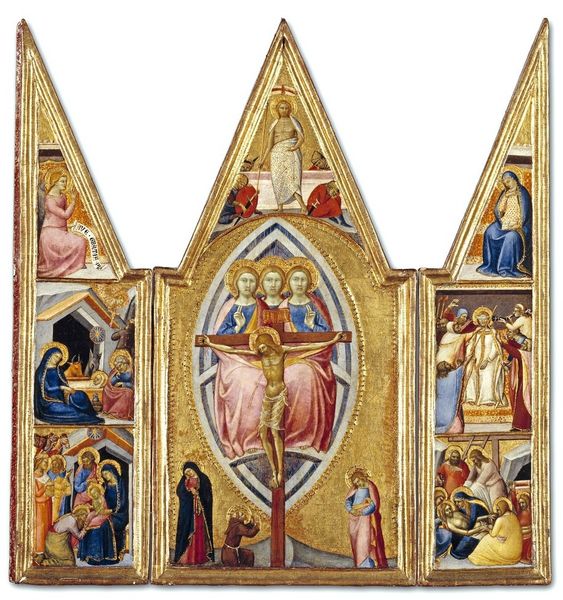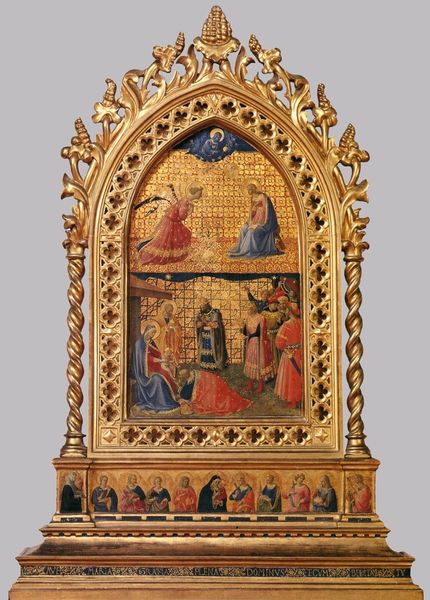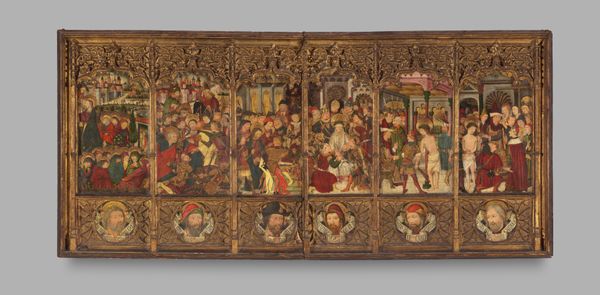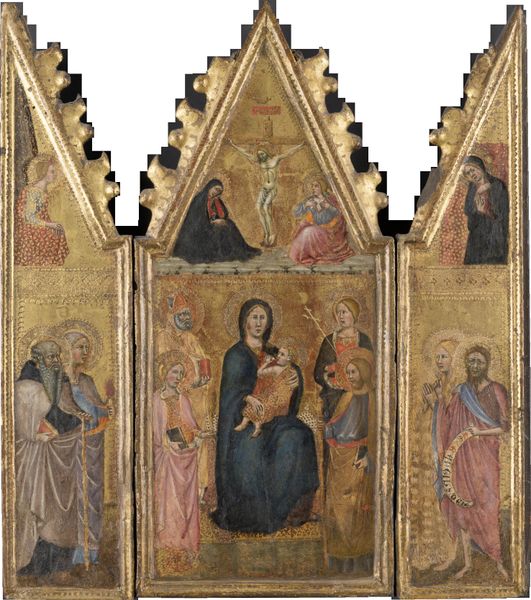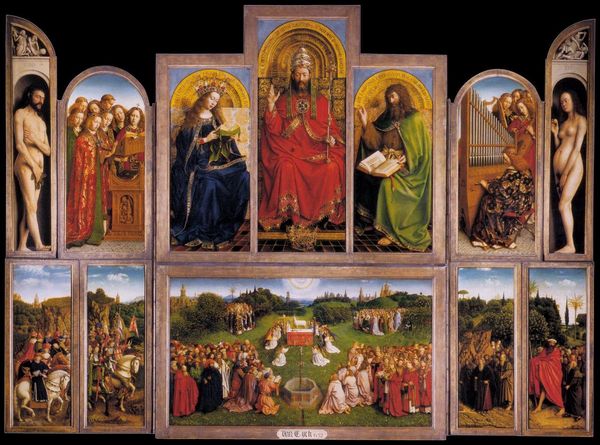
panel, tempera, painting
#
medieval
#
panel
#
narrative-art
#
tempera
#
painting
#
figuration
#
history-painting
#
international-gothic
#
italian-renaissance
#
christ
Dimensions: Central panel, overall, with engaged frame, 24 1/8 x 16 3/4 in. (61.3 x 42.5 cm), painted surface 20 5/8 x 14 3/4 in. (52.4 x 37.5 cm); left wing, overall, with engaged frame, 23 3/8 x 8 1/4 in. (59.4 x 21 cm), painted surface 21 1/2 x 6 1/2 in. (54.6 x 16.5 cm); right wing, overall, with engaged frame, 23 3/8 x 8 1/4 in. (59.4 x 21 cm), painted surface 21 1/2 x 6 1/4 in. (54.6 x 15.9 cm)
Copyright: Public Domain
Franceschino Zavattari created this polyptych depicting scenes from The Life of Christ during the Early Renaissance. The iconographic program of the painting revolves around the figure of Christ and evokes a deep sense of pathos. Consider the crucifixion in the center. Christ’s agony is palpable, yet this imagery finds echoes in earlier depictions of suffering heroes. The weeping Virgin Mary, cloaked in sorrow, has roots in ancient mourning figures; a pose that reappears across cultures to signify profound grief. Consider, too, the Lamentation at the bottom left. Mary cradling Christ’s body is a powerful expression of maternal love and sorrow. It is a variation of the “pietà” motif—an image that draws from classical representations of mourning goddesses, resurfacing through Christian art to express universal themes of loss and compassion. Such images engage viewers on a subconscious level, triggering deep-seated emotions and memories. This isn't merely religious art; it's a window into the collective unconscious, where archetypes of suffering, sacrifice, and redemption reside. It demonstrates the cyclical progression of symbols, constantly evolving, yet eternally resonant.
Comments
No comments
Be the first to comment and join the conversation on the ultimate creative platform.
